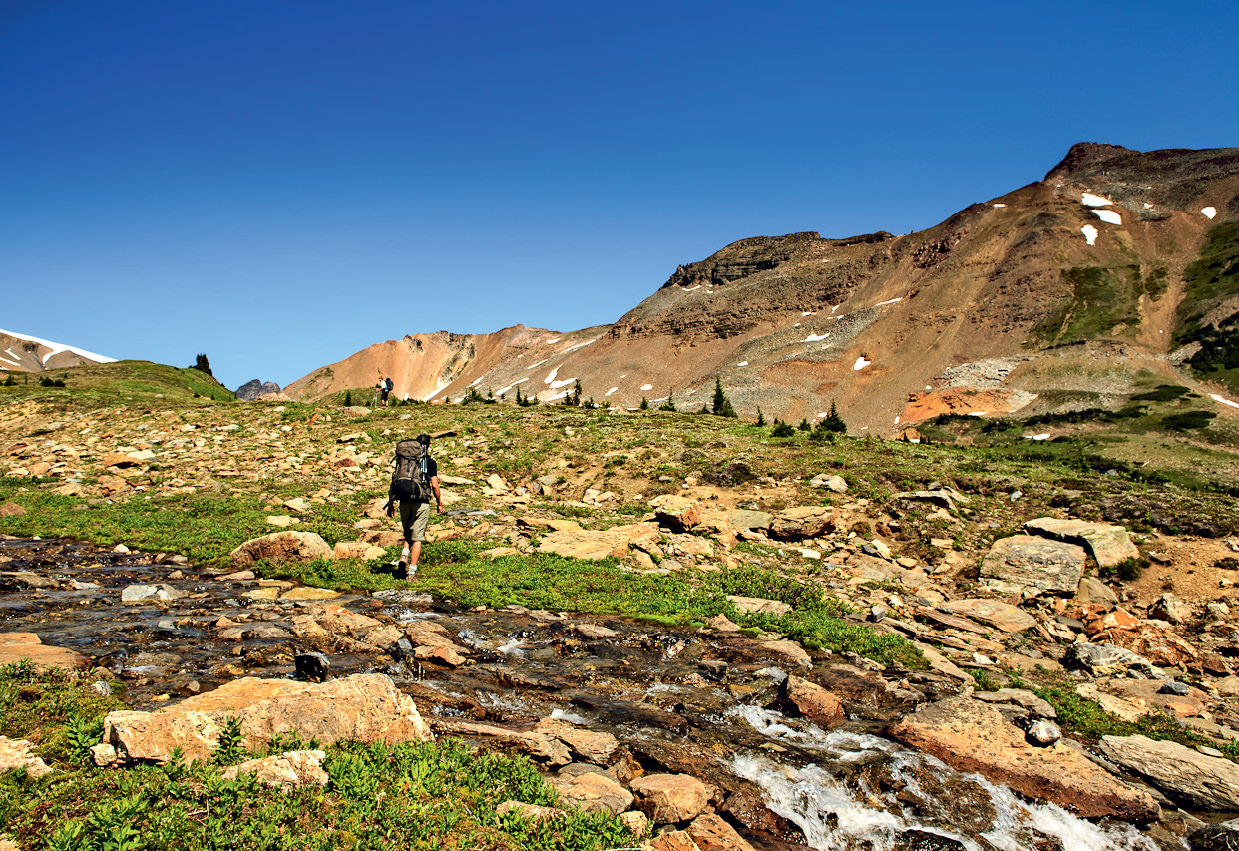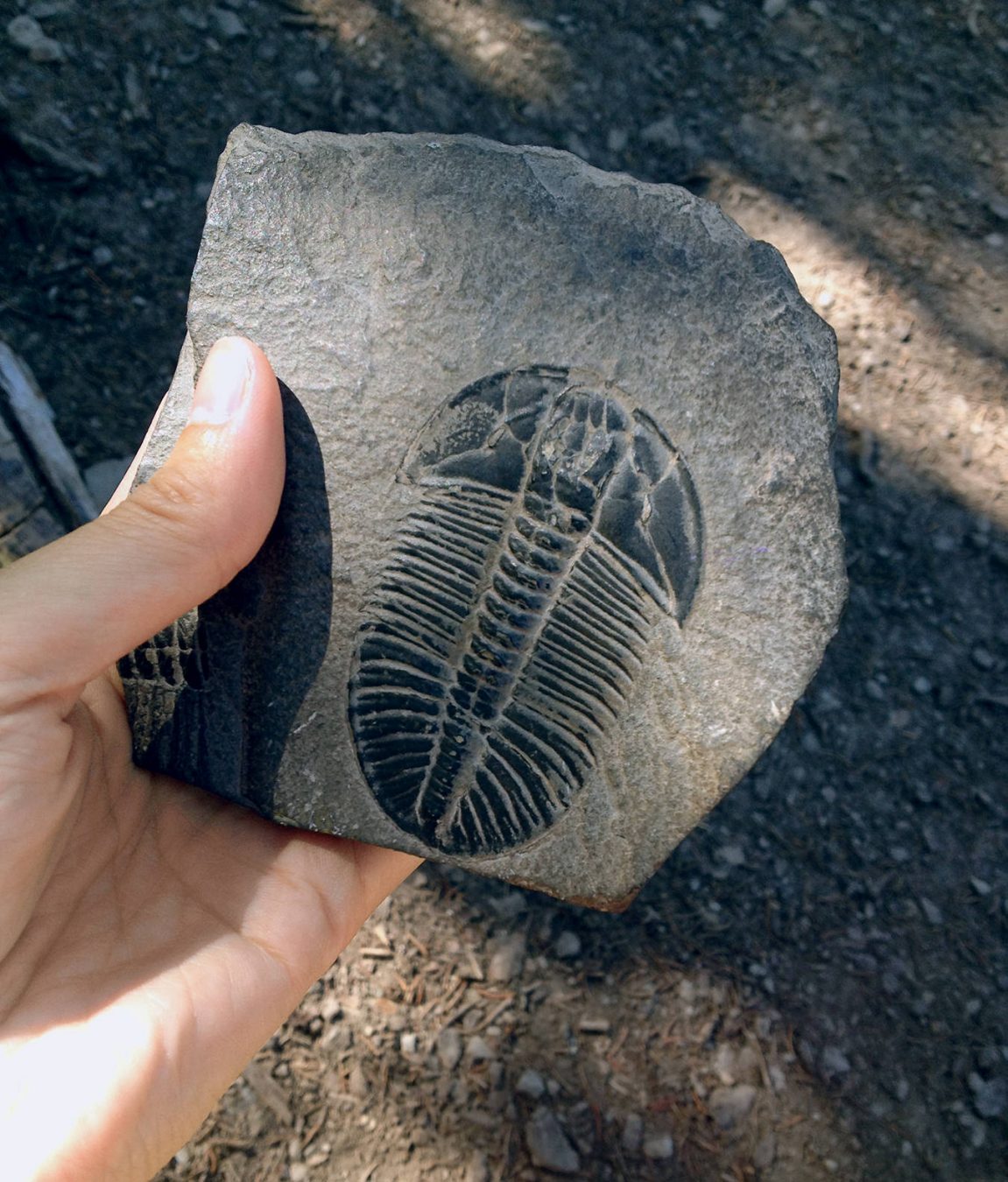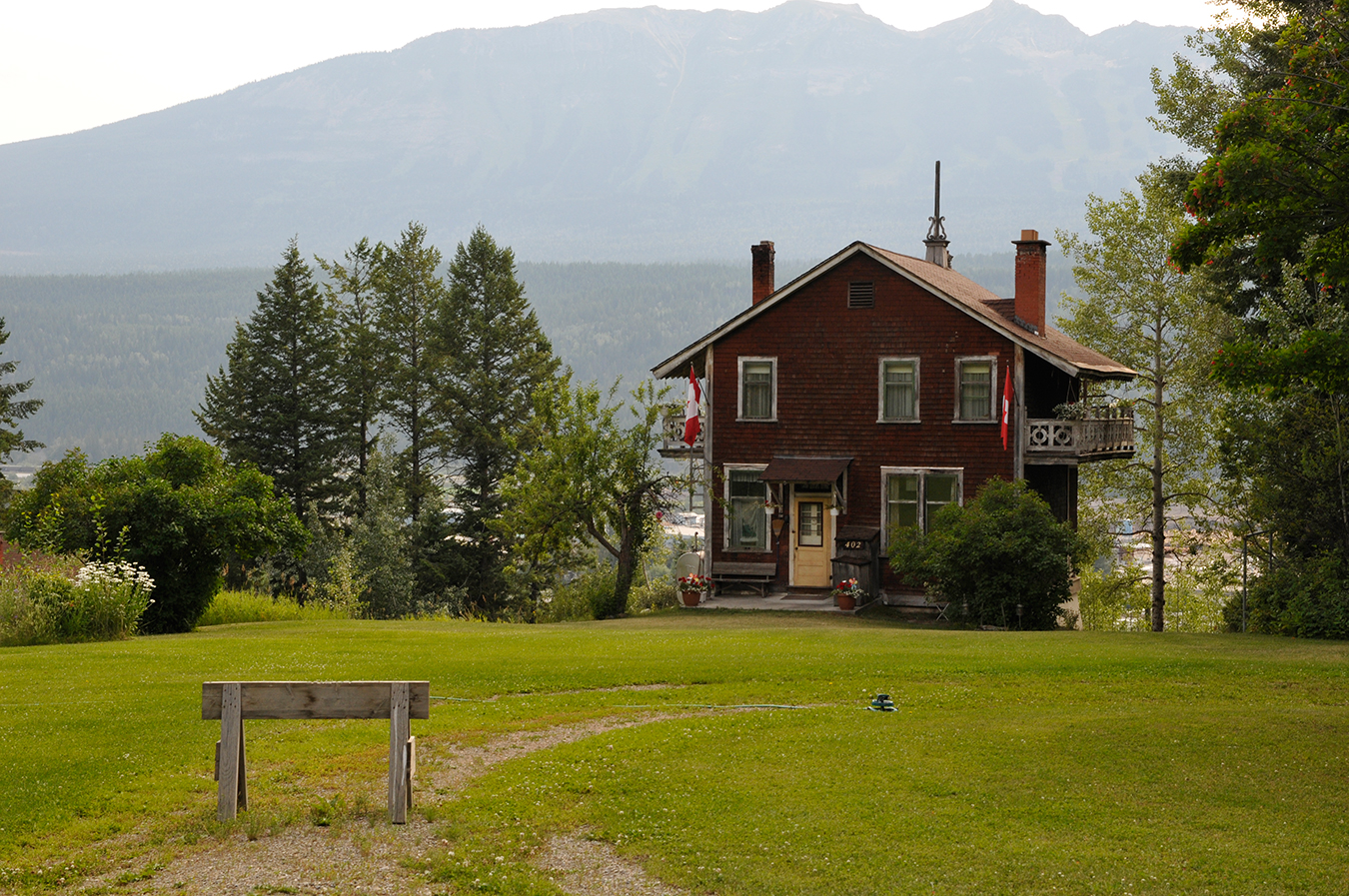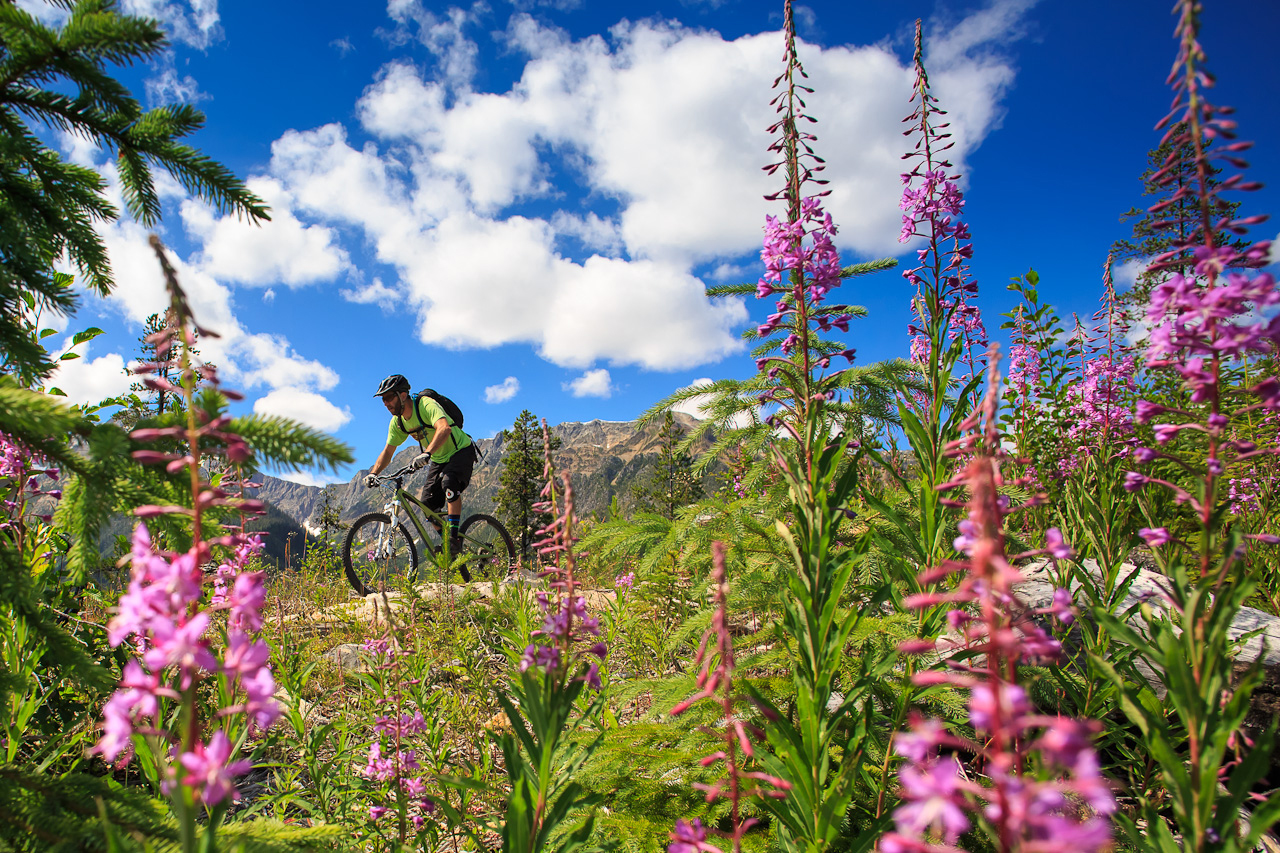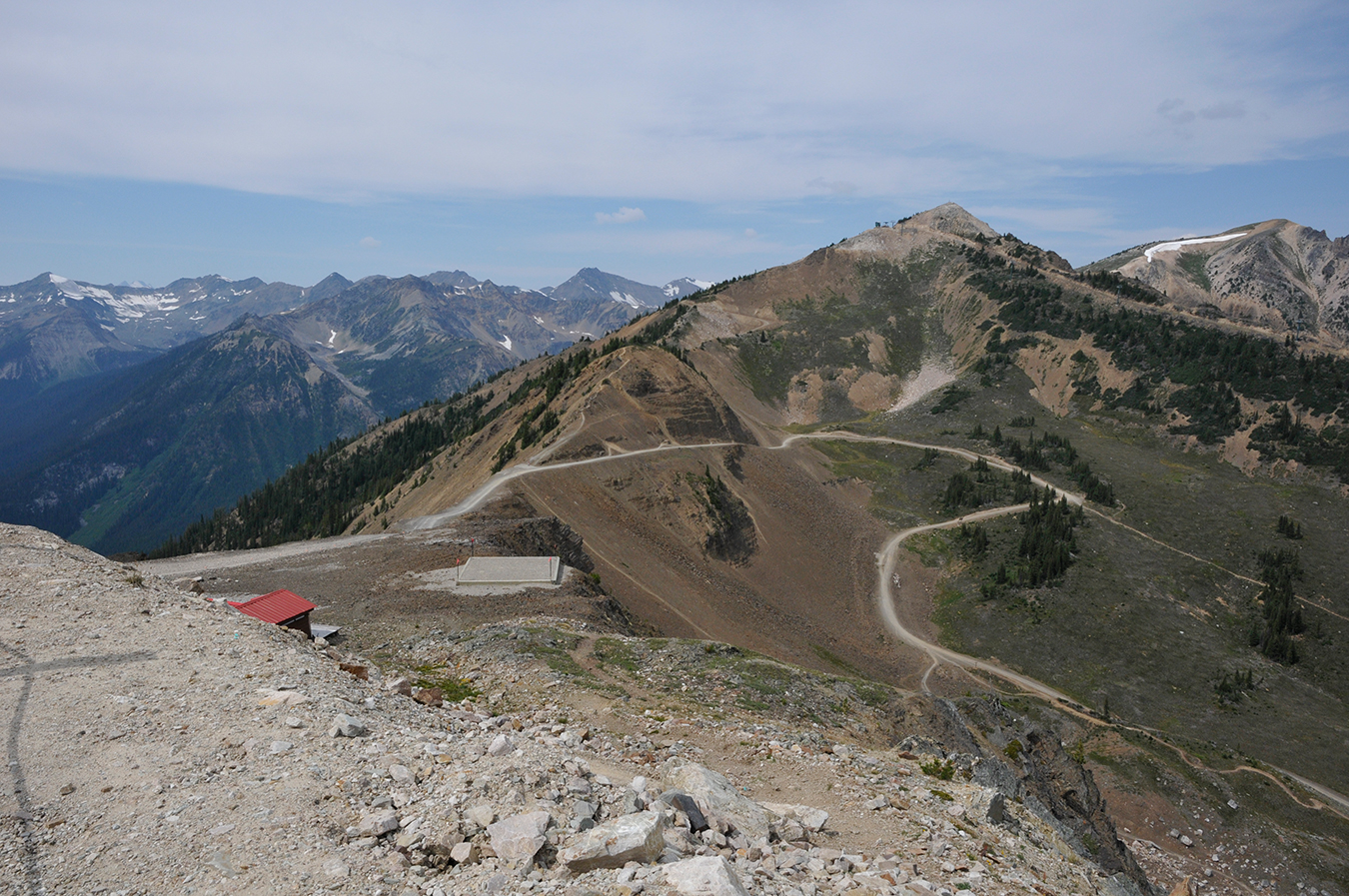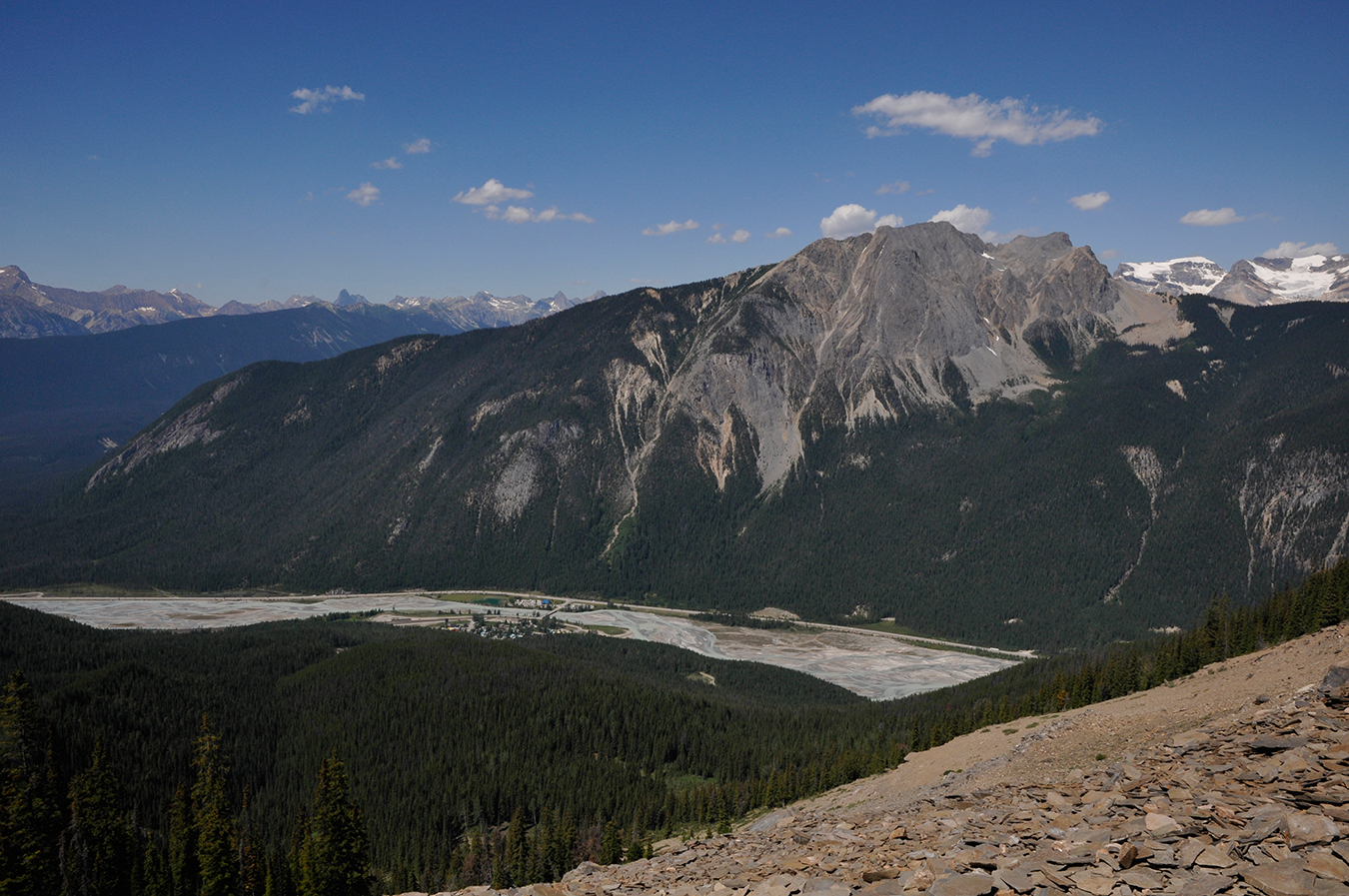The town of Golden began as a single building known simply as “the Cache”; the site was established as a base camp for CPR surveyor A.B. Rogers. In 1884, a nearby lumber camp named itself “Silver City” and so, not to be outdone, the Cache became “Golden City”.
A year later, the railway was completed, and Golden became a permanent stop on the line. CPR general manager William Van Horne decided, “Since we can’t export the scenery, we shall import the tourists”. So guides from Switzerland were hired to connect travellers to the landscape. Lured by the possibility of uncharted territories and first ascents, it was an easy choice to make for many, and between 1899 and 1954, the CPR employed around 35 Swiss mountaineers to shepherd tourists about the Selkirk and Rocky mountains. (Advertisements in 1900 promoted the Canadian Rockies as “Fifty Switzerlands in One”.) And shepherds they were; the Swiss guides led thousands of expeditions over a span of 50-odd years without a single fatality. In 1911, permanent homes were constructed for Swiss guides and their families. The original chalets of Edelweiss Village can still be seen today, though they are now mostly obscured by foliage. The golden era of Swiss guiding ended in 1954, when the last two contracts with CPR expired, but these tenacious trekkers undoubtedly instilled not only an appreciation for the mountains but left a legacy by lending their expertise in mountain rescue, ski lift technology, and the development of ski resorts.
Today, the town of 4,200 is uniquely poised at the confluence of the Columbia and Kicking Horse rivers and surrounded by six national parks, making Golden an adventure heartland. If you take the Kicking Horse Mountain Resort chairlift up the mountain, you can actually see five of the six on a clear day. Naturally, the highest bike park in Canada offers the longest descent; from the peak, you can zip, white-knuckled, down an uninterrupted 1,200 metres of trail. The mountain has enough berms, skinnies, singletracks, tabletops, and rock slabs to keep you challenged and endlessly entertained. Or, just settle in for a cold beer on the patio at Eagle’s Eye Restaurant, perched at 7,700 feet. Needless to say, the view is tremendous. If that isn’t enough excitement for you, this summer, Kicking Horse will also open a via ferrata route on the north face of Terminator Mountain. Despite the ominous name, the fixed route climb is very safe as participants are always clipped in. Kicking Horse is also home to a 20-acre grizzly bear refuge, the largest protected enclosure of its kind in the world. In June 2002, two five-month-old grizzly cubs were orphaned when poachers killed their mother in the Cariboo Mountains. Unfortunately, Cari did not survive his first hibernation, but Boo is 13 years old now and still living at the refuge.
For thrill-seekers, the views while skydiving promise to take your breath away, if the experience itself doesn’t. From 10,000 feet above ground, the fast-flowing Kicking Horse River, a milky turquoise, meets the mellow, emerald-hued, Columbia River at the tip of town and runs on; the Rockies to the east and the Purcell and Selkirk mountains to the west are just crinkles in the landscape.
About an hour away from Golden lies the little unincorporated community of Field, population 169, bracketed by Walcott Peak and Mt. Stephen. In 1907, paleontologist Charles Walcott was drawn to the Canadian Rockies after learning that CPR workers would go up Mt. Stephen after dinner and collect “stone bugs”. Two years later, he discovered the source of the fossils, a site he named Burgess Shale, and began excavating. Over the course of 14 years, Walcott collected 65,000 specimens, now housed at the Smithsonian Institution. The Burgess Shale is lauded as one of the most significant fossil beds in the world today. Designated a UNESCO World Heritage site in 1981, the protected area is accessible to the public through guided tours only. At the site, you can play paleontologist—fossils of trilobites, arthropods, and other critters abound, and standing amongst 505-million-year-old specimens is quite the humbling experience.
All this adventuring is sure to activate an appetite, and so before you set off, be sure to tuck into a hearty breakfast at Big Bend Café, a local haunt with a laid back vibe. The Cedar House Restaurant & Chalets is nestled on a 10-acre property, and so the patio is quite a serene place to dine. Inside, chef Corey Fraser pulls off an impressive feat each night, as he typically runs the open-concept kitchen solo.
A summer visit to Golden promises a delightful survey of Canadian heritage, glorious landscapes marked by majestic peaks and ferocious rivers, and a pledge to return, perhaps in winter.
Click here for more Active Vancouver stories.

